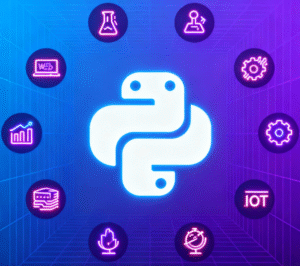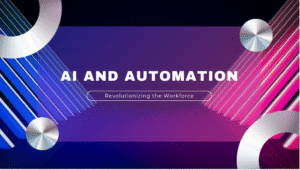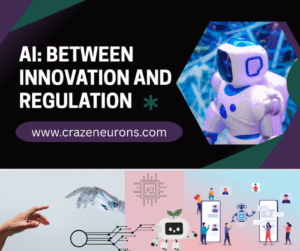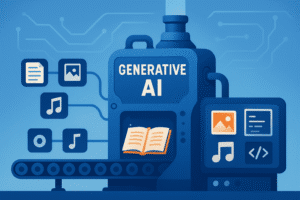1. What is Data and Why Do Types Matter in Data Science and Analytics?
Data can be described as a collection of raw facts, numbers, records, or observations that we obtain, store, and later analyze to gain information. In data science and analytics, data is the base from which we build patterns, develop models, and create predictions. Different types of data behave differently. Numerical data may allow statistical modeling, while categorical or textual data requires other methods. If we do not pay attention to the type of data, then the choice of storage, processing, or algorithms may be unsuitable, and the results can be inaccurate. That is why knowing the type of data is not just a matter of classification but a technical requirement for analysis that works.
2. Structured Data: Definition, Examples, and Use Cases
Structured data is information organized in a fixed model, usually arranged in rows and columns. Each field has a defined type such as numbers, strings, or dates, and the storage is often in databases or spreadsheets.
Examples:
- SQL databases with tables of customer records (name, age, email, transactions).
- Excel files for sales reports, budgets, or timesheets.
- Inventory systems, transaction records, or CRM databases.
Use Cases:
- Business intelligence for sales analysis and forecasting.
- Finance for accounting, auditing, and compliance.
- Healthcare for storing patient history and billing.
- E-commerce for product catalogs and orders.
- HR for employee profiles, payroll, and attendance.
3. Unstructured Data: Definition, Examples, Challenges, and Use Cases
Unstructured data does not follow a fixed schema. It appears in raw forms such as video, text, or audio files. It cannot be stored easily in relational tables because there is no clear arrangement of fields.
Examples: Social media posts, reviews, emails, videos, and photos.
Challenges: Storage is heavy, searching is difficult, and processing requires complex methods like natural language processing or image recognition. Costs are high because systems need advanced computation to extract meaning.
Use Cases:
- Sentiment analysis on social platforms.
- Fraud detection using free-text and irregular behavior patterns.
- Recommendation systems for video and music platforms.
- Healthcare diagnostics from medical imaging and clinical notes.
4. Semi-Structured Data: Definition, Examples, and Use Cases
Semi-structured data is not organized in strict tables, but it still has tags, markers, or key-value pairs that help in understanding the content. It sits between structured and unstructured formats.
Examples:
- XML with tags like <student><name>John</name></student>.
- JSON with key–value pairs such as {“name”:”John”, “age”:22}.
- NoSQL databases like MongoDB and Cassandra with flexible storage.
Use Cases:
- APIs in web applications where JSON is common.
- Data exchange between platforms using XML.
- Big data handling through NoSQL for user profiles and logs.
- IoT sensor data where structures vary.
- Content management such as catalogs and metadata.
5. Quasi-Structured Data: Definition, Examples, and Use Cases
Quasi-structured data is loosely organized, often inconsistent, but still has patterns that can be parsed. It is not purely structured, nor fully unstructured, and often comes from digital activity.
Examples: Clickstream data, server logs, emails with headers, sensor outputs, or CSVs with missing values.
Use Cases:
- Tracking customer behavior through clickstreams for e-commerce.
- Fraud detection from irregular banking logs.
- Monitoring system health with server records.
- Marketing analytics to study user journeys.
- IoT data analysis for predictive maintenance.
6. Comparison: Structured, Unstructured, Semi-Structured, Quasi-Structured
Structured data is consistent and stored in tables, which makes searching and analysis fast. Unstructured data has no model, and examples include videos, audio, or text files, which are difficult to process. Semi-structured data stands between them, with partial organization through tags or markers such as JSON or XML. Quasi-structured data is irregular but still has hints of structure, such as logs and clickstreams, which allow analysis if processed carefully.
| Type | Format | Examples | Use |
| Structured | Fixed rows & columns | SQL, Excel, CRM data | Easy search, reports, finance, HR |
| Unstructured | No fixed format | Videos, images, posts, emails | Sentiment, media, healthcare imaging |
| Semi-Structured | Some tags or markers | JSON, XML, NoSQL | APIs, IoT, logs, big data |
| Quasi-Structured | Loose, irregular patterns | Clickstreams, logs, sensors | Behavior tracking, fraud, monitoring |
7. Why Knowing Data Types Matters for Tools, Storage, and Analytics
If we know the type of data, we can match it with the right storage and tools. Structured data fits relational databases such as SQL. Unstructured data often requires NoSQL systems or distributed big data frameworks. Semi-structured data is usually managed with document-oriented databases or XML parsers. Quasi-structured data like logs or streams may need real-time big data tools. A wrong match wastes time and money, while a correct match ensures efficiency and accuracy.
8. Applications and Real-World Use Cases
Structured Data:
- Banking and finance: Transactions and fraud scoring.
- Healthcare: Patient and lab records.
- Retail: Inventory and sales forecasts.
Unstructured Data:
- Marketing: Sentiment from reviews and social posts.
- Entertainment: Content recommendation.
- Healthcare: Image diagnostics.
Semi-Structured Data:
- E-commerce: Catalogs and user activity.
- Telecom: Call detail records.
- Cybersecurity: Logs for attack detection.
Quasi-Structured Data:
- Web analytics: Clickstream behavior.
- Digital marketing: Campaign tracking.
- IoT: Device and sensor logs.
9. Reflection and Relevance in AI and Analytics

The question is not only what data we have, but how we treat it. Structured data gives us clarity, while unstructured data gives us complexity. Semi-structured and quasi-structured formats raise new issues of balance between order and flexibility. For artificial intelligence and analytics, the type of data sets the path: what tools to pick, what models to run, and what results to expect. The dilemma often comes from the fact that systems must be both accurate and adaptive. If the system decides based only on structured records, it may miss context; if it relies only on unstructured inputs, the process may be costly and slow. Reflection on data types helps us see data not as one block but as different forms that can guide analysis, policy, and decision-making.
Next Step – Explore Services with Craze Neurons
When we look at the path to growing our skills, career, or business, we find that it is not only about time or effort but about the ways in which we use guidance, tools, and experience. At Craze Neurons, we offer a set of services that can act as a lens into knowledge, performance, and opportunity. Through these offerings, we can see the depth of learning and the perspective that comes from practical engagement.
- Upskilling Training – We provide hands-on training in Data Science, Python, AI, and related fields. This is a way for us to look at learning from both practical and conceptual perspectives.
👉 Click here to know more: https://wa.me/918368195998?text=I%20want%20to%20Upskill%20with%20Craze%20Neurons - ATS-Friendly Resume – Our team can craft resumes that are optimized for Applicant Tracking Systems (ATS), highlighting skills, experiences, and achievements. This service is available at ₹599, providing a tangible way for us to make first impressions count.
👉 Click here to know more: https://wa.me/918368195998?text=I%20want%20an%20ATS-Friendly%20Resume%20from%20Craze%20Neurons - Web Development – We build responsive, SEO-friendly websites that can be a framework for growth. It is a way for us to put ideas into structure, visibility, and functionality.
👉 Click here to know more: https://wa.me/918368195998?text=I%20want%20a%20Website%20from%20Craze%20Neurons - Android Projects – These are real-time projects designed with the latest tech stack, allowing us to learn by doing. Guided mentorship gives us a chance to look at development from a practical lens and to understand the why behind each decision.
👉 Click here to know more: https://wa.me/918368195998?text=I%20want%20an%20Android%20Project%20with%20Guidance - Digital Marketing – We provide campaigns in SEO, social media, content, and email marketing, which can be used to see our brand’s reach and engagement from a deeper perspective.
👉 Click here to know more: https://wa.me/918368195998?text=I%20want%20Digital%20Marketing%20Support - Research Writing – We deliver plagiarism-free thesis, reports, and papers, which can help us explore knowledge, present ideas, and communicate insight with clarity.
👉 Click here to know more: https://wa.me/918368195998?text=I%20want%20Research%20Writing%20Support
In all these services, we can see that learning, building, promoting, or publishing is not just a task but a process of discovery. It is a way for us to understand, measure, and reflect on what is possible when guidance meets effort.
❓ Frequently Asked Questions (FAQs) – Craze Neurons Services
1. What is included in the Upskilling Training?
We provide hands-on training in Data Science, Python, AI, and allied fields. This allows us to work with concepts and projects, see practical applications, and explore the deeper understanding of each topic.
2. How does the ATS-Friendly Resume service work?
Our team crafts ATS-optimized resumes that highlight skills, experience, and achievements. This is a service priced at ₹599 and acts as a lens to make the first impression clear, measurable, and effective.
3. What kind of websites can Craze Neurons build?
We build responsive and SEO-friendly websites for businesses, personal portfolios, and e-commerce platforms. This enables us to translate ideas into structure, visibility, and functional design.
4. What are the Android Projects about?
We offer real-time Android projects with guided mentorship. This gives us an opportunity to learn by doing, understand development from multiple angles, and apply knowledge in a controlled, real-world context.
5. What does Digital Marketing service include?
Our service covers SEO, social media campaigns, content marketing, and email strategy, allowing us to look at brand growth quantitatively and qualitatively, understanding what works and why.
6. What type of Research Writing do you provide?
We provide plagiarism-free academic and professional content, including thesis, reports, and papers. This allows us to express ideas, support arguments, and explore knowledge with depth and precision.
7. How can I get started with Craze Neurons services?
We can begin by clicking the WhatsApp link for the service we are interested in. This lets us communicate directly with the team and explore the steps together.
8. Can I use multiple services together?
Yes, we can combine training, resume, web, Android, digital marketing, and research services. This allows us to see synergies, plan strategically, and use resources effectively.
9. Is the training suitable for beginners?
Absolutely. The courses are designed for learners at all levels. They allow us to progress step by step, integrate projects, and build confidence alongside skills.
10. How long does it take to complete a service or course?
Duration depends on the service. Training programs vary by course length. Projects may take a few weeks, while resume, website, or research work can often be completed within a few days. This helps us plan, manage, and achieve outcomes efficiently.
Stay Connected with Us
🌐 Website: www.crazeneurons.com
📢 Telegram: https://t.me/cenjob
📸 Instagram: https://www.instagram.com/crazeneurons
💼 LinkedIn: https://www.linkedin.com/company/crazeneurons
▶️ YouTube:https://www.youtube.com/@CrazeNeurons
📲 WhatsApp: +91 83681 95998







One Response
Thanks i learn a lot about data